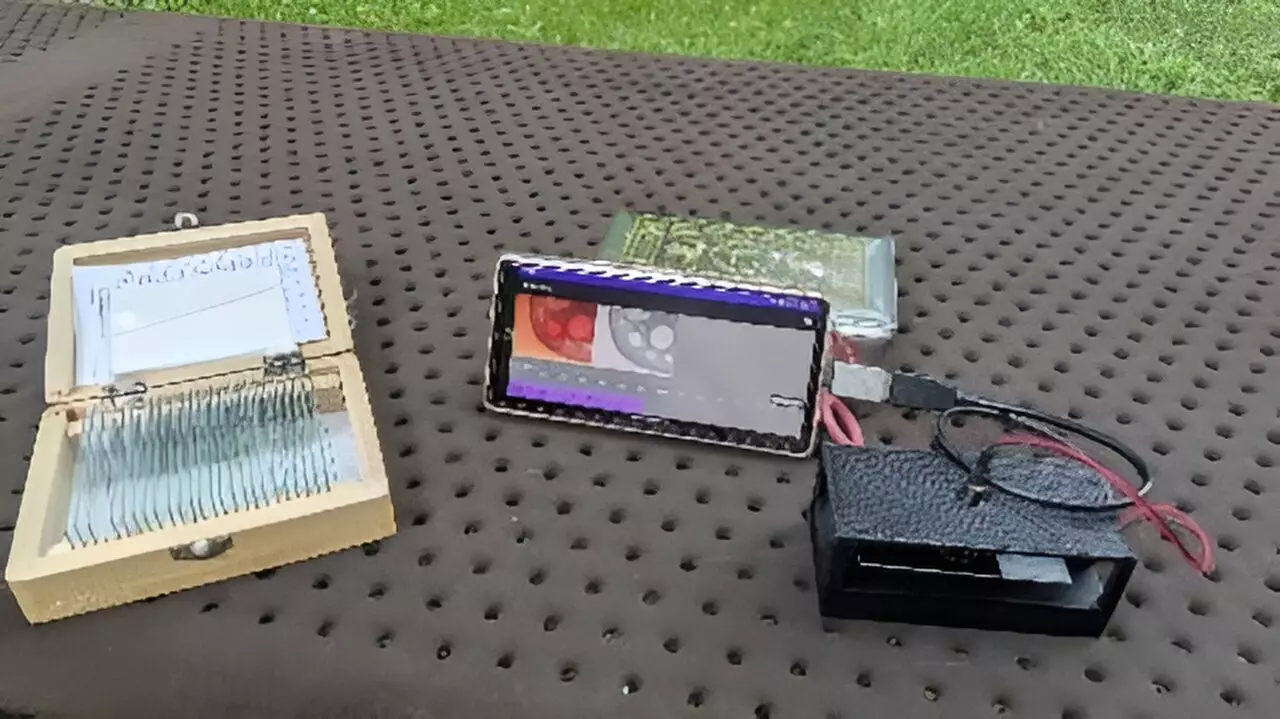In recent years, the intersection of technology and science has led to transformative innovations that redefine traditional practices. One of the most exciting advancements is the development of a smartphone-based digital holographic microscope, which promises to deliver precision 3D measurement capabilities through a highly portable and affordable device. Unlike conventional digital holographic microscopes that often rely on bulkier optical systems and robust computing resources, this new iteration capitalizes on everyday technology—smartphones—to broaden its applications, particularly in education and healthcare in resource-constrained environments.
The versatility of this mobile microscope is not just about convenience; it’s also about redefining who can access high-level scientific tools. By breaking down the barriers to entry—namely cost and complexity—educators and healthcare providers now have the means to leverage sophisticated imaging technology. With the capacity to observe microorganisms directly in classrooms or diagnose medical conditions in remote clinics, the implications of such accessibility are profound.
Innovative Technology Meets Simplicity
At the heart of this remarkable innovation lies the synergy between 3D printing technology and digital processing capabilities. Research leader Yuki Nagahama highlights the simplicity of the optical system crafted using a 3D printer, combined with a smartphone-based computational framework. What sets this microscope apart is its ability to capture, reconstruct, and display holograms nearly instantaneously. Moreover, the interactive experience through smartphone gestures, like pinch-to-zoom, enhances user engagement and ease of use.
The holographic microscopes operate by creating an interference pattern from a light beam that interacts with the sample. This interference pattern is then digitally reconstructed to yield three-dimensional representations, allowing for intricate analysis of structural features. Traditional systems often face difficulties in outdoor applications or require cumbersome setups, but this new solution could enable fieldwork and experiments in various environments, making scientific exploration more dynamic.
Real-Time Imaging: A Game Changer
One of the most significant challenges in the development of smartphone-based holographic technology has been achieving real-time image reconstruction. Traditional systems often suffer from lag due to the limited processing capabilities of smartphones, impeding their viability for instant diagnostics or educational use. Nagahama and his team tackled this issue head-on through the innovative use of band-limited double-step Fresnel diffraction, a method that curtails the quantity of data needed for processing. This technological leap allows for rapid computation and nearly real-time visual output, crucial for effective analysis and observation.
Imagine classroom settings where students observe live microorganisms interacting in their environments, or healthcare practitioners conducting diagnoses in real-time with mobile imaging solutions. These scenarios not only advocate for active learning but also the advancement of medical practices in underserved regions.
Future Directions: Deep Learning in Microscopy
As promising as the current capabilities are, the researchers are not resting on their laurels. An exciting avenue they are exploring is the integration of deep learning to further enhance image quality and minimize artifacts that can arise during the hologram reconstruction process. The incorporation of machine learning could lead to superior imaging techniques that outperform current market standards, potentially setting a benchmark for future innovations in microscopy.
The prospect of artificial intelligence augmenting scientific processes is game-changing. With deep learning algorithms able to recognize and correct geometric errors or unwanted noise in images, we are looking at a potential revolution not only in microscopy but across various fields that rely on imaging technology.
Envision a future where scientists, teachers, and healthcare workers alike employ such sophisticated tools at their fingertips, enabling them to conduct real-time analysis, share findings across platforms, and apply insights instantly. This digital holographic microscope serves as an inspiration—a testament to how technology can be harnessed to make the improbable possible in our pursuit of knowledge and innovation.
The potential of smartphone-based digital holographic microscopy is immense, fueling imaginations about its impact on education, health, and beyond. With continuous advancements, the dream of creating an informed society, empowered by accessible technology, begins to edge closer to reality.

